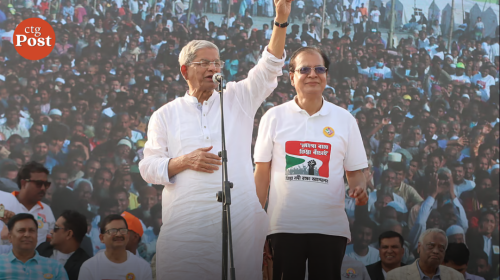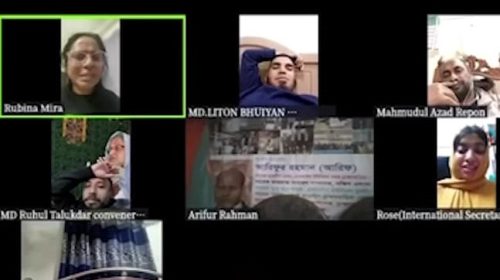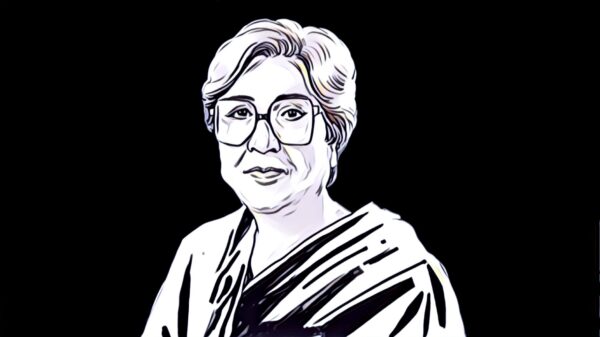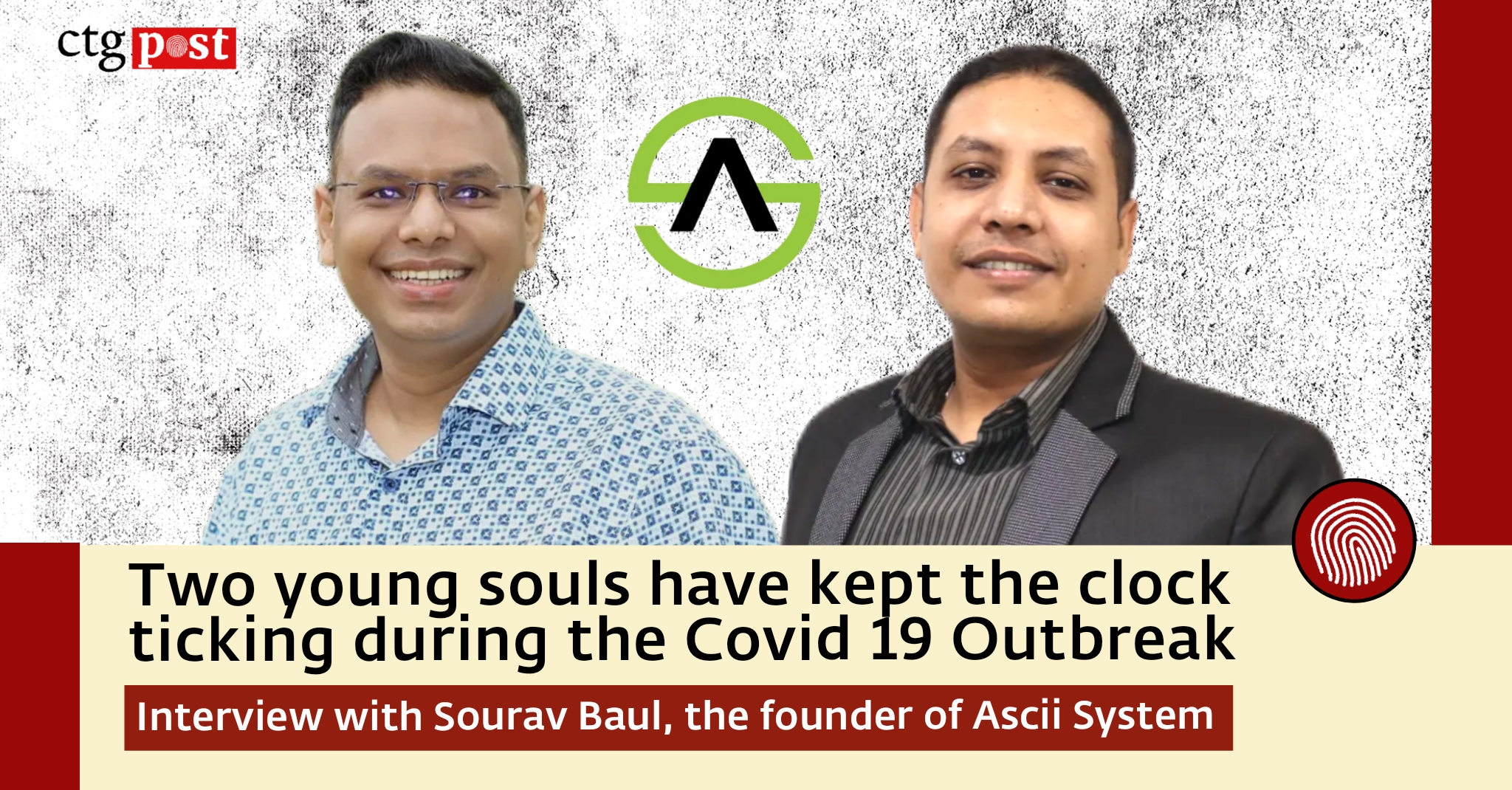Meticulously carving out stones, wood and shaping lifeless soil, she breathes life into the abstract. Bindu Theke Britto, the 1970 film in the early days of Bangladeshi film industry, is a testament of Rebecca’s love for movies, hard work and extraordinary talent – poet Asad Chowdhury described Rebecca, the first Bangladeshi woman to direct a film.
Bindu Theke Britto was the only film she directed and she also acted in the film. Besides directing and acting, Rebecca also made a name for herself as a sculptor and poet.
Rebecca’s full name is Manzar Ara Begum and Bakul was her nickname. She was born on 11 March 1941 in Pailanpur of Pabna’s Haiderpur.
His father Sheikh Bahadur Ali, a Judge Court Jury in profession, was a Congress leader from Pabna. He also acted in theatres. Rebecca’s mother’s name is Meherunnesa. Rebecca is the fourth child of the couple’s seven children. Rebecca breathed her last in 2007.
To learn more about Rebecca’s childhood and upbringing, we reached out to the Bangladesh Film Archive and learned that the public organisation published a book titled Bindu Theke Britto – Ekjon Rebeccar Kotha. The book, which is a research based work by Suchitra Sarker, sheds some light on Rebecca’s story. Film researcher Anupam Hayat also added some information about her.
Childhood
From a young age, Rebecca was very stubborn and skittish in nature. Rebecca spent her childhood in Pailanpur, her birthplace. He has also grown up. From there, Rebecca’s family moved to another place in Pabna and shortly after her schooling began at Gandhi Girls School, a co-ed institution. Suchitra Sen’s younger sister was a classmate of Rebecca.
In an interview, Rebecca spoke about her school life at the Gandhi Girls School.
“We studied in a school, the foundation of which was inspired by the ideals of the Swadeshi Movement. In addition to studying, we had to do extensive exercises including using knives, guns, lathi khela, throwing etc. The school also inspired students in cultural activities. It was here that I learned about painting, sculpture and other aspects of Art,” she said.
Being proficient in everything at school perhaps worked out against her favour. Many in the family did not appreciate her knack in multiple activities. One day after returning from school, Rebecca learnt that her family fixed her marriage.
Child marriage and family
Rebecca got married while she was still in school. However, Rebecca’s eldest son said in an interview that his mother passed SSC. She was married to Kabir Uddin, who worked at a medical store in Dhaka.
“I cried and became restless when I heard about the marriage. But, I had to marry and it was my father who said ‘Kobul’ (I do) for me. That was the day when the playful and naïve girl called died. The shackles of childhood marriage were forced on my body and mind,” Rebecca told the interview.
After the marriage she lived in Narinda, where she gave birth to three children – two sons Ragib Hasan and Shibli Ehsan and the youngest daughter Monalisa Tuli.
Divorce and second marriage
After giving birth to three children, Rebecca’s marriage started to fall apart. Rebecca wrote poems, painted pictures, made sculptures and her husband did not approve of those. In 1960 she divorced her husband and concentrated on her work.
In the meantime, she married a man named Harun and started acting in films. This marriage lasted a little over 10 years before they split around 1980.
Her three children alternately lived with their parents. However, after independence, they permanently started living with their mother.
The beginning of acting
Rebecca learned acting at an early age thanks to his father, who was cultural-minded. From an early age, she used to act with children of the same age. She directed the play ‘Chandragupta’ when she was in class six. Rebecca played the role of Mansingh in the play Rana Pratap. She also learned to sing and dance but everything was interrupted because of the marriage. Rebecca made her film debut in 1964. He played a small role in the movie directed by Zillur Rahman.
Director Zillur Rahman lived in a house next to Rebecca’s in Green Road. She took the name Ratri Roy in her acting career. After acting in the movie Jibon, she received offers to play in many movies. She acted in some 15 films. Notable films she has acted in includes Zaheer Raihan’s Bahana, Mustafiz’s Mala, Etehasham’s Dakbabu, Chhoto Saheb, Azhar Hossain’s Uljhan, Bashir Hossain’s 13th Feku Ostagar Lane, Nurul Haque Bachchu’s Agun Niye Khela, Manush Omanush and her own film Bindu Theke Britto.
The first and only direction
Bindu Theke Britto was the first and only film Rebecca directed. But the movie is not available as the Pakistani Army burned both negatives and positives of the film during the Liberation War.
According to the booklet of the film, Atiya Mofiz, F Alam, Rebecca, Golam Akbar, Amita, Anwar Ashraf, Faizullah, Shahid, Anup, Kalipad, Wabeid, Qasim, Dulali, Sushma, Mustaq and Shahjahan acted in the film.
Atiya Chowdhury gained fame after acting in the movie that told a family story. Rebecca’s performance was highly praised by film critics of the time.
Speaking about her experience of directing a movie, Rebecca told one interview, “It was 1969. The situation in the country was turbulent then. Curfew was on. There was no way out of the house. I started the movie in that situation. I always believed that women can do everything men can. I wanted to prove that even a woman can make a movie. However, the story behind the movie is rather long. I began preparing for it for a long time. Basically the primary drive was to create something. First the purpose was to protest Urdu movies, and second was to prove everything is possible through will and effort. Thirdly, it was an ideal way to voice your strong political ideology.”
The making of the movie cost only 80 thousand taka, of which the hero of the movie – Mofiz – took 50 thousand.
Writing and others
Rebecca was always involved in multiple activities. She worked as a filmmaker, learned music, acted, acted in commercials, wrote lyrical plays, wrote poems and stories, and produced TV shows.
She published six books in total. Bakul Thoter Brishti and Nodi Bujhi Dake Bhalobashar Bhukhonde are notable.
Rebecca also made sculptures. The name of his house in Dhaka was Shesher Kobita. She decorated this house with various types of sculptures and her own paintings.
Liberation War and Recognition
Rebecca took part in the liberation war directly and indirectly. Political leaders used to go to her house. She also worked as an underground worker of the Awami League. She learned to use firearms at the time and signed up for the Suicide Squad.
Rebecca received little recognition for her work. In 1995, she received an award from the Bangladesh Film Directors Association on the occasion of the organisation’s 100 year anniversary. Pabna community clinic honoured her with a gold medal for her contribution in social service.
A government-funded short documentary on Rebecca – Bindu Theke Britto: Ekjon Bokuler Akhyan is currently in the making. The movie, which is almost in the final stages of production, is directed by Mehzad Ghalib.
“I named myself Rebecca – it means someone who is invisible but exists. It felt like it goes with my story,” Rebecca told an interview while talking about her name.

















